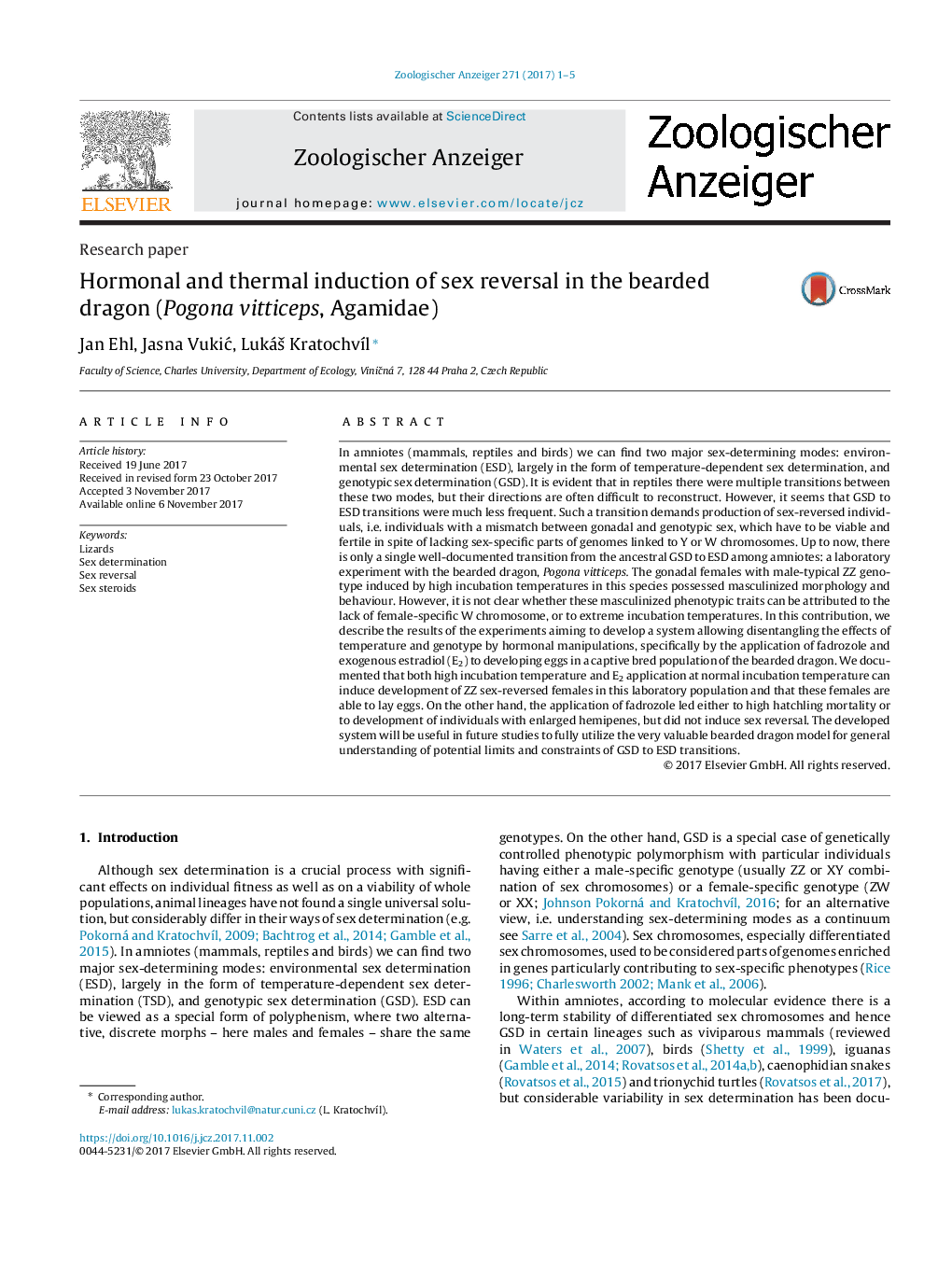| کد مقاله | کد نشریه | سال انتشار | مقاله انگلیسی | نسخه تمام متن |
|---|---|---|---|---|
| 8626878 | 1568604 | 2017 | 5 صفحه PDF | دانلود رایگان |
عنوان انگلیسی مقاله ISI
Hormonal and thermal induction of sex reversal in the bearded dragon (Pogona vitticeps, Agamidae)
دانلود مقاله + سفارش ترجمه
دانلود مقاله ISI انگلیسی
رایگان برای ایرانیان
کلمات کلیدی
موضوعات مرتبط
علوم زیستی و بیوفناوری
علوم کشاورزی و بیولوژیک
علوم دامی و جانورشناسی
پیش نمایش صفحه اول مقاله

چکیده انگلیسی
In amniotes (mammals, reptiles and birds) we can find two major sex-determining modes: environmental sex determination (ESD), largely in the form of temperature-dependent sex determination, and genotypic sex determination (GSD). It is evident that in reptiles there were multiple transitions between these two modes, but their directions are often difficult to reconstruct. However, it seems that GSD to ESD transitions were much less frequent. Such a transition demands production of sex-reversed individuals, i.e. individuals with a mismatch between gonadal and genotypic sex, which have to be viable and fertile in spite of lacking sex-specific parts of genomes linked to Y or W chromosomes. Up to now, there is only a single well-documented transition from the ancestral GSD to ESD among amniotes: a laboratory experiment with the bearded dragon, Pogona vitticeps. The gonadal females with male-typical ZZ genotype induced by high incubation temperatures in this species possessed masculinized morphology and behaviour. However, it is not clear whether these masculinized phenotypic traits can be attributed to the lack of female-specific W chromosome, or to extreme incubation temperatures. In this contribution, we describe the results of the experiments aiming to develop a system allowing disentangling the effects of temperature and genotype by hormonal manipulations, specifically by the application of fadrozole and exogenous estradiol (E2) to developing eggs in a captive bred population of the bearded dragon. We documented that both high incubation temperature and E2 application at normal incubation temperature can induce development of ZZ sex-reversed females in this laboratory population and that these females are able to lay eggs. On the other hand, the application of fadrozole led either to high hatchling mortality or to development of individuals with enlarged hemipenes, but did not induce sex reversal. The developed system will be useful in future studies to fully utilize the very valuable bearded dragon model for general understanding of potential limits and constraints of GSD to ESD transitions.
ناشر
Database: Elsevier - ScienceDirect (ساینس دایرکت)
Journal: Zoologischer Anzeiger - A Journal of Comparative Zoology - Volume 271, November 2017, Pages 1-5
Journal: Zoologischer Anzeiger - A Journal of Comparative Zoology - Volume 271, November 2017, Pages 1-5
نویسندگان
Jan Ehl, Jasna VukiÄ, LukáÅ¡ KratochvÃl,